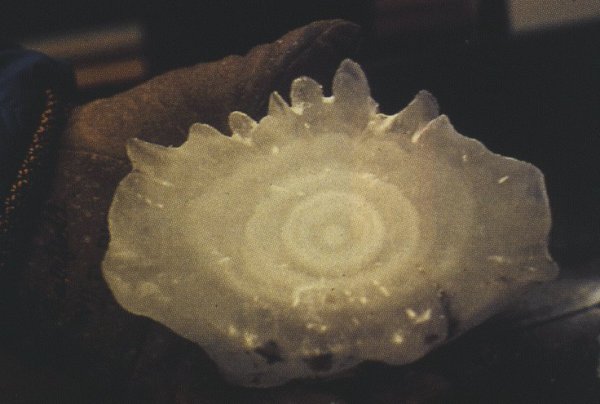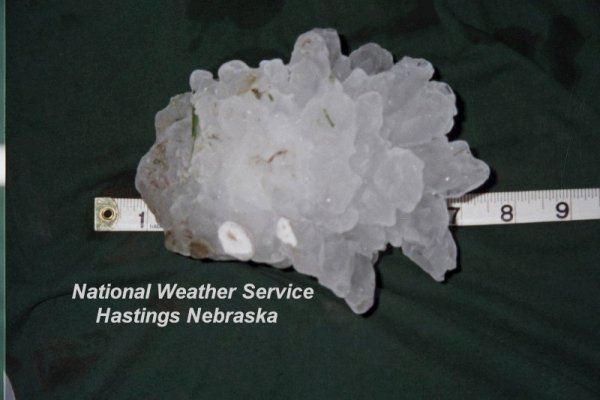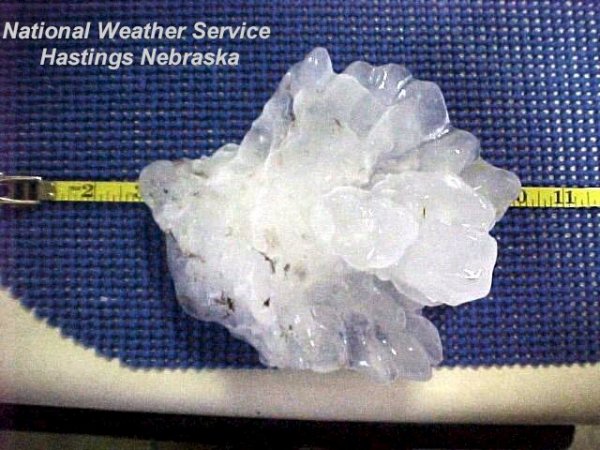
Hail forms in the updraft region of a thunderstorm. A hail producing thunderstorm will need to have a strong updraft. Extremely large hail requires an extreme updraft. Hail forms as supercooled droplets, ice crystals and water freeze upon an embryo. Once hail forms, gravity will apply a force on the hail to bring it to the earth's surface. If the updraft is stronger than the influence from gravity, the hail stone will continue to grow. Once the hail reaches a size that the updraft can no longer keep aloft, the hail stone will make its way to the surface. When a hail stone is sliced in half it is common to notice hail rings. These rings are alternate shades of white. The whiter rings (soft ice) are produced by supercooled water and ice crystals coming in contact with the hailstone that is below freezing on the surface while the clearer rings (hard ice) are produced from water that is above freezing that freezes on the surface. Below is an image of the largest hail stone to fall. This is the Coffeyville, Kansas hailstone that fell in 1970. The hail stone was 1.67 pounds and over 5.5 inches in diameter. See link and image below for the largest hail stone and a cross section of the hail stone. http://www.ucar.edu/communications/factsheets/Hail.html  A hail stone shape is circular at smaller sizes and becomes more irregular at larger sizes. Since the shape is usually circular, a guide for reporting hail size by comparing it to circular objects of the same diameter is used for simplicity in reporting. Below is a reporting guide. Severe hail is 0.75" or greater in diameter. Pea 0.25" Dime 0.75" Quarter 1.00" Golf Ball 1.75" Tennis Ball 2.50" Base Ball 2.75" Grapefruit 4.00" Giant 4.00+ (ruler measured)Giant hail stones are usually more irregular in shape. This is because irregularities of a smaller size hail stone are exacerbated as the hail stone gets bigger. Also, smaller hailstones can merge onto a bigger hailstone. When this happens the hail stone will have bulges and will have a larger diameter in certain directions. In addition, giant hail stones impact the earth's surface with a great force. This force can distort the shape of the hail stone. The following two images are of hail stones that fell in Aurora, Nebraska on June 22, 2003. Notice the irregular shape of the hail stones.   NWS: HASTINGS, NE |